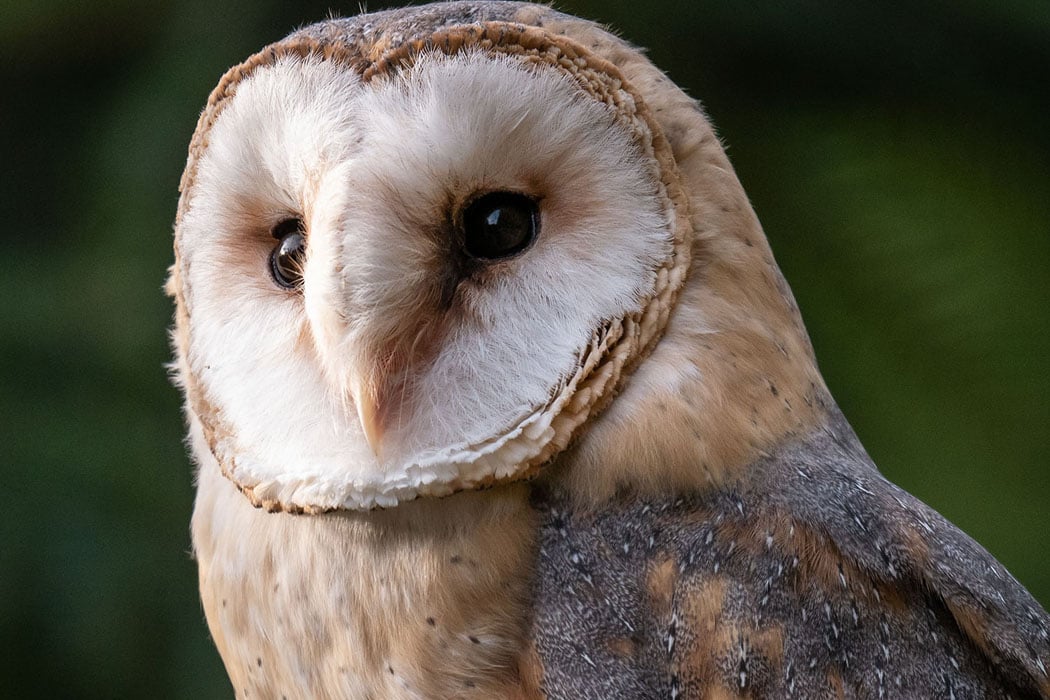
The barn owl (Tyto alba) is the most widely distributed species of owl and one of the most widespread of all birds. It is also referred to as the common barn owl, to distinguish it from other species in its family, Tytonidae, which forms one of the two main lineages of living owls, the other being the typical owls (Strigidae). The barn owl is found almost everywhere in the world except polar and desert regions, Asia north of the Himalayas, most of Indonesia, and some Pacific islands.[2]
Phylogenetic
evidence shows that there are at least three major lineages of barn
owl, one in Europe, western Asia and Africa, one in southeast Asia and
Australasia, and one in the Americas, and some highly divergent taxa on islands. Accordingly, some authorities split the group into the western barn owl for the group in Europe, western Asia and Africa, the American barn owl for the group in the Americas, and the eastern barn owl
for the group in southeast Asia and Australasia. Some taxonomic
authorities further split the group, recognising up to five species, and
further research needs to be done to clarify the position. There is a
considerable variation between the sizes and colour of the approximately
28 subspecies but most are between 33 and 39 cm (13 and 15 in) in
length with wingspans ranging from 80 to 95 cm (31 to 37 in). The
plumage on head and back is a mottled shade of grey or brown, the
underparts vary from white to brown and are sometimes speckled with dark
markings. The face is characteristically heart-shaped and is white in
most subspecies. This owl does not hoot, but utters an eerie, drawn-out
shriek.
The barn owl is nocturnal over most of its range, but in Britain
and some Pacific islands, it also hunts by day. Barn owls specialise in
hunting animals on the ground and nearly all of their food consists of
small mammals which they locate by sound, their hearing being very
acute. They mate for life unless one of the pair is killed, when a new
pair bond may be formed. Breeding takes place at varying times of year
according to locality, with a clutch, averaging about four eggs, being
laid in a nest in a hollow tree, old building or fissure in a cliff. The
female does all the incubation, and she and the young chicks are
reliant on the male for food. When large numbers of small prey are
readily available, barn owl populations can expand rapidly, and globally
the bird is considered to be of least conservation concern. Some subspecies with restricted ranges are more threatened.
:max_bytes(150000):strip_icc()/Napa-Vineyards-Barn-Owls-FT-BLOG1021-0faf60a38b8c449595028b828f805d34.jpg)
Taxonomy and etymology
The ashy-faced owl (T. glaucops) was for some time included in T. alba, and by some authors its populations from the Lesser Antilles still are. Based on DNA evidence, König, Weick & Becking (2009) recognised the American Barn Owl (T. furcata) and the Curaçao Barn Owl (T. bargei) as separate species.[7] They also proposed that T. a. delicatula should be split off as a separate species, to be known as the eastern barn owl, which would include the subspecies T. d. sumbaensis, T. d. meeki, T. d. crassirostris and T. d. interposita.[8] However, the International Ornithological Committee has doubts about this and states that the split of Tyto delicatula from T. alba "may need to be revisited".[9] Some island subspecies are occasionally treated as distinct species, a move which should await further research into barn owl phylogeography. According to Bruce in the Handbook of Birds of the World, Volume 5: Barn-owls to Hummingbirds, "a review of the whole group [is] long overdue".[2] Molecular analysis of mitochondrial DNA shows a separation of the species into two clades, an Old World alba and a New World furcata, but this study did not include T. a. delicatula which the authors seem to have accepted as a separate species. A high amount of genetic variation was also found between the Indonesian T. a. stertens and other members of the alba clade, leading to the separation of stertens into Tyto javanica.[10]
The barn owl has a wider distribution than any other species of owl. Many subspecies have been proposed over the years but several are generally considered to be intergrades between more distinct populations. Twenty to thirty are usually recognised, varying mainly in body proportions, size and colour. Island forms are mostly smaller than mainland ones, and those inhabiting forests have darker plumage and shorter wings than those occurring in open grasslands.[11] Barn owls range in colour from the almost beige-and-white nominate subspecies, erlangeri and niveicauda, to the nearly black-and-brown contempta.[2]
In the Handbook of Birds of the World, Volume 5: Barn-owls to Hummingbirds, the following subspecies are listed:[2]
 |
|---|
| Subspecies | Description | Range | Synonyms |
|---|
Description
The bird's head and upper body typically vary between pale brown and some shade of grey (especially on the forehead and back) in most subspecies. Some are purer, richer brown instead, and all have fine black-and-white speckles except on the remiges and rectrices (main wing feathers), which are light brown with darker bands. The heart-shaped face is usually bright white, but in some subspecies it is brown.[2][12] The left ear is slightly above the eyes on the vertical plane, whereas the right ear is slightly below the eyes. The orientation of the ear coverts in relation to the face also differs between the ears, with a difference of about 15°.[20] The underparts, including the tarsometatarsal (lower leg) feathers, vary from white to reddish buff among the subspecies, and are either mostly unpatterned or bear a varying number of tiny blackish-brown speckles. It has been found that at least in the continental European populations, females with more spotting are healthier than plainer birds. This does not hold true for European males by contrast, where the spotting varies according to subspecies. The beak varies from pale horn to dark buff, corresponding to the general plumage hue, and the iris is blackish brown. The talons, like the beak, vary in colour, ranging from pink to dark pinkish-grey and the talons are black.[2][12]
Contrary to popular belief, the barn owl does not hoot (such calls are made by typical owls, like the tawny owl or other members of the genus Strix). It instead produces the characteristic shree scream, ear-shattering at close range, an eerie, long-drawn-out shriek. Males in courtship give a shrill twitter. Both young and old can hiss like a snake to scare away intruders. Other sounds produced include a purring chirrup denoting pleasure, and a "kee-yak", which resembles one of the vocalisations of the tawny owl. When captured or cornered, the barn owl throws itself on its back and flails with sharp-taloned feet, making for an effective defence. In such situations it may emit rasping sounds or clicking snaps, produced probably by the beak but possibly by the tongue.[19][22]
Behaviour and ecology
Barn owls are not particularly territorial but have a home range inside which they forage. For males in Scotland this has a radius of about 1 km (0.6 mi) from the nest site and an average size of about 300 hectares. Female home ranges largely coincide with that of their mates. Outside the breeding season, males and females usually roost separately, each one having about three favoured sites in which to conceal themselves by day, and which are also visited for short periods during the night. Roosting sites include holes in trees, fissures in cliffs, disused buildings, chimneys and haysheds and are often small in comparison to nesting sites. As the breeding season approaches, the birds move back to the vicinity of the chosen nest to roost.[28]
Diet and feeding
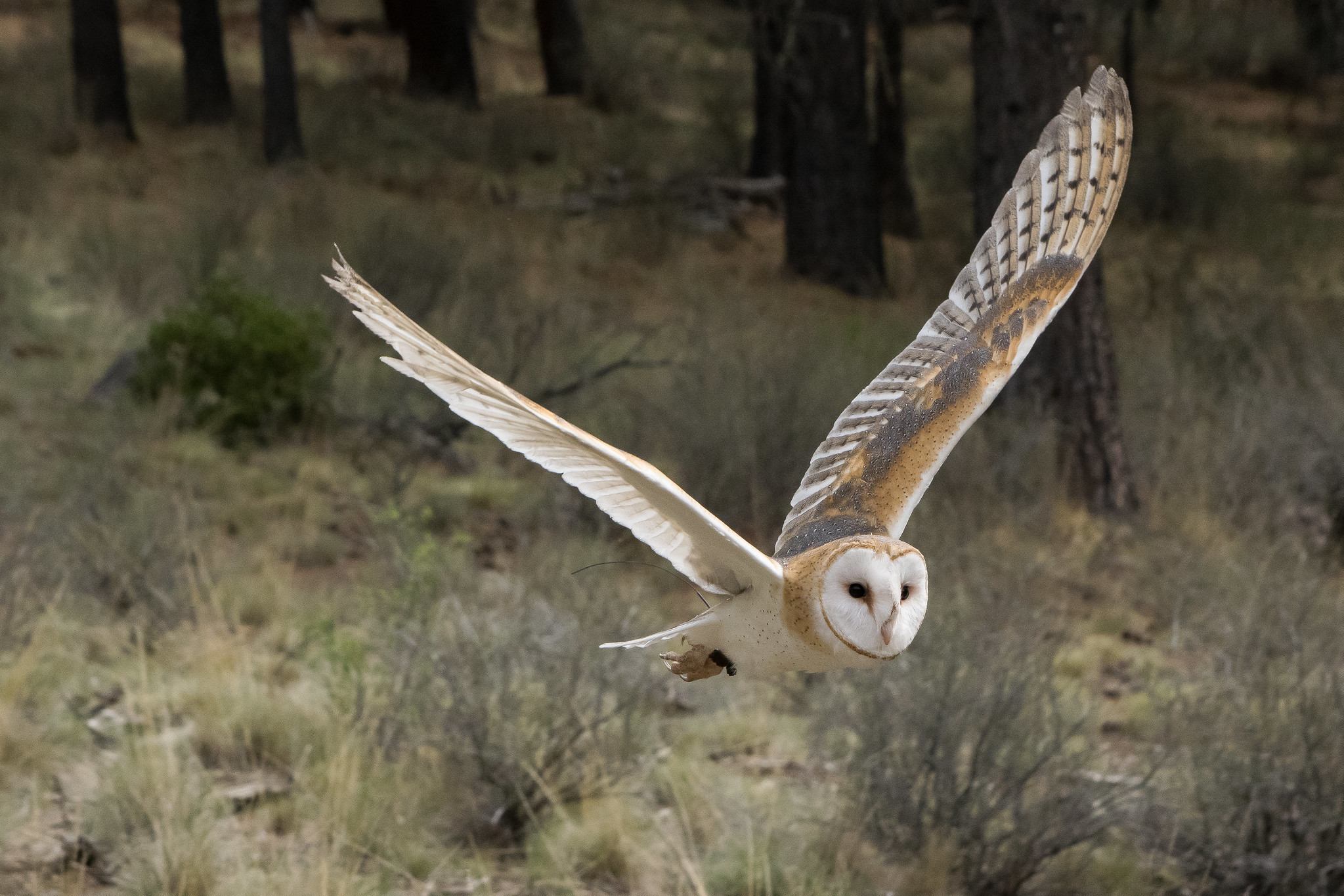
The diet of the barn owl has been much studied; the items consumed
can be ascertained from identifying the prey fragments in the pellets of
indigestible matter that the bird regurgitates. Studies of diet have
been made in most parts of the bird's range, and in moist temperate
areas over 90% of the prey tends to be small mammals, whereas in hot,
dry, unproductive areas, the proportion is lower, and a great variety of
other creatures are eaten depending on local abundance. Most prey is
terrestrial but bats and birds are also taken, as well as lizards, amphibians and insects. Even when they are plentiful and other prey scarce, earthworms do not seem to be consumed.[31]
In North America and most of Europe, voles predominate in the diet and shrews
are the second most common food choice. Mice and rats form the main
foodstuffs in the Mediterranean region, the tropics, sub-tropics and
Australia. Barn owls are usually more specialist feeders in productive
areas and generalists in drier areas.[31] On the Cape Verde Islands, geckos are the mainstay of the diet, supplemented by birds such as plovers, godwits, turnstones, weavers and pratincoles,[32] and on a rocky islet off the coast of California, a clutch of four young were being reared on a diet of Leach's storm petrel (Oceanodroma leucorhoa).[33] In Ireland, the accidental introduction of the bank vole
in the 1950s led to a major shift in the barn owl's diet: where their
ranges overlap, the vole is now by far the largest prey item.[34]
Locally superabundant rodent species in the weight class of several
grams per individual usually make up the single largest proportion of
prey.[35] In the United States, rodents and other small mammals usually make up ninety-five percent of the diet[36] and worldwide, over ninety percent of the prey caught.[37][38]
The barn owl hunts by flying slowly, quartering the ground and
hovering over spots that may conceal prey. It may also use branches,
fence posts or other lookouts to scan its surroundings, and this is the
main means of prey location in the oil palm
plantations of Malaysia. The bird has long, broad wings, enabling it to
manoeuvre and turn abruptly. Its legs and toes are long and slender
which improves its ability to forage among dense foliage or beneath the
snow and gives it a wide spread of talons when attacking prey.[29]
Studies have shown that an individual barn owl may eat one or more
voles (or their equivalent) per night, equivalent to about twenty-three
percent of the bird's bodyweight. Excess food is often cached at roosting sites and can be used when food is scarce.[39]
Small prey is usually torn into chunks and eaten completely
including bones and fur, while prey larger than about 100 g (4 oz), such
as baby rabbits, Cryptomys blesmols, or Otomys
vlei rats, is usually dismembered and the inedible parts discarded.
Contrary to what is sometimes assumed, the barn owl does not eat
domestic animals on any sort of regular basis. Regionally, non-rodent
foods are used as per availability. On bird-rich islands, a barn owl
might include some fifteen to twenty percent of birds in its diet, while
in grassland it will gorge itself on swarming termites, or on Orthoptera such as Copiphorinae katydids, Jerusalem crickets (Stenopelmatidae) or true crickets (Gryllidae). Bats and even frogs, lizards and snakes may make a minor but significant contribution to the diet; small Soricomorpha like Suncus shrews may be a secondary prey of major importance.[14][30][35]
The barn owl has acute hearing, with ears placed asymmetrically.
This improves detection of sound position and distance and the bird does
not require sight to hunt. The facial disc plays a part in this
process, as is shown by the fact that with the ruff feathers removed,
the bird can still locate the source in azimuth but fails to do so in elevation.[40] Hunting nocturnally or crepuscularly,
this bird can target its prey and dive to the ground, penetrating its
talons through snow, grass or brush to seize small creatures with deadly
accuracy. Compared to other owls of similar size, the barn owl has a
much higher metabolic rate, requiring relatively more food. Weight for weight, barn owls consume more rodents—often regarded as pests
by humans—than possibly any other creature. This makes the barn owl one
of the most economically valuable wildlife animals for agriculture.
Farmers often find these owls more effective than poison in keeping down
rodent pests, and they can encourage barn owl habitation by providing
nest sites.[41]
Breeding
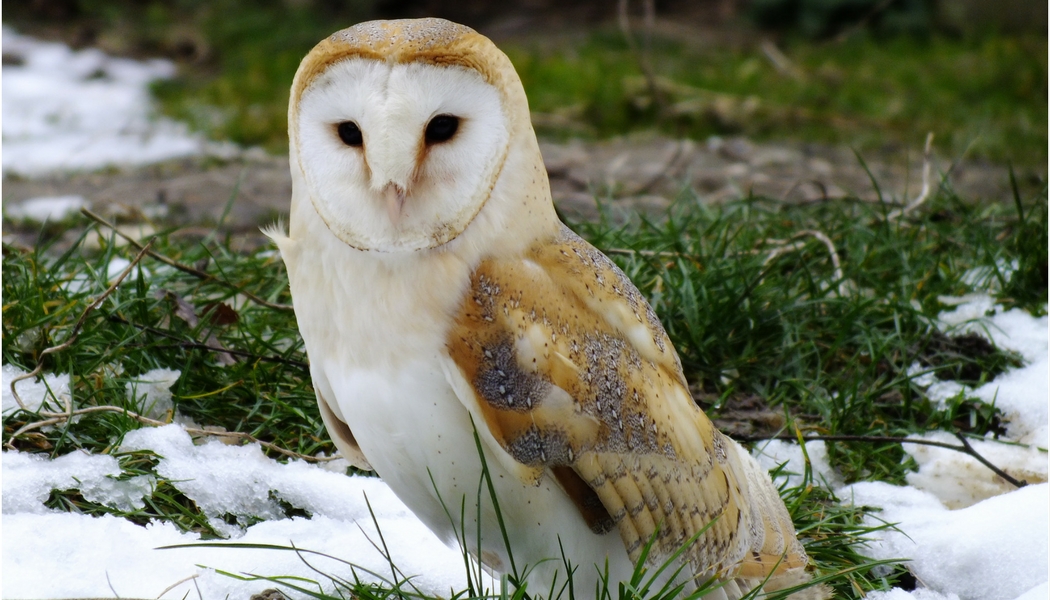
Barn owls living in tropical regions can breed at any time of year,
but some seasonality in nesting is still evident. Where there are
distinct wet and dry seasons, egg-laying usually takes place during the
dry season, with increased rodent prey becoming available to the birds
as the vegetation dies off. In arid regions, such as parts of Australia,
breeding may be irregular and may happen in wet periods, triggered by
temporary increases in the populations of small mammals. In temperate climates,
nesting seasons become more distinct and there are some seasons of the
year when no egg-laying takes place. In Europe and North America, most
nesting takes place between March and June when temperatures are
increasing. The actual dates of egg-laying vary by year and by location,
being correlated with the amount of prey-rich foraging habitat around
the nest site and often with the phase of the rodent abundance cycle.[42]
An increase in rodent populations will usually stimulate the local barn
owls to begin nesting; thus, even in the cooler parts of its range, two
broods are often raised in a good year.
[5]
Females are ready to breed at ten to eleven months of age
although males sometimes wait till the following year. Barn owls are
usually monogamous,
sticking to one partner for life unless one of the pair dies. During
the non-breeding season they may roost separately, but as the breeding
season approaches they return to their established nesting site, showing
considerable site fidelity. In colder climates, in harsh weather and
where winter food supplies may be scarce, they may roost in farm
buildings and in barns between hay bales, but they then run the risk
that their selected nesting hole may be taken over by some other,
earlier-nesting species. Single males may establish feeding territories,
patrolling the hunting areas, occasionally stopping to hover, and
perching on lofty eminences where they screech to attract a mate. Where a
female has lost her mate but maintained her breeding site, she usually
seems to manage to attract a new spouse.[43]
Once a pair-bond has been formed, the male will make short
flights at dusk around the nesting and roosting sites and then longer
circuits to establish a home range. When he is later joined by the
female, there is much chasing, turning and twisting in flight, and
frequent screeches, the male's being high-pitched and tremulous and the
female's lower and harsher. At later stages of courtship, the male
emerges at dusk, climbs high into the sky and then swoops back to the
vicinity of the female at speed. He then sets off to forage. The female
meanwhile sits in an eminent position and preens,
returning to the nest a minute or two before the male arrives with food
for her. Such feeding behaviour of the female by the male is common,
helps build the pair-bond and increases the female's fitness before
egg-laying commences.[43]
Before commencing laying, the female spends much time near the nest and is entirely provisioned by the male. Meanwhile, the male roosts nearby and may cache any prey that is surplus to their requirements. When the female has reached peak weight, the male provides a ritual presentation of food and copulation occurs at the nest. The female lays eggs on alternate days and the clutch size averages about five eggs (range two to nine). The eggs are chalky white, somewhat elliptical and about the size of bantam's eggs, and incubation begins as soon as the first egg is laid. While she is sitting on the nest, the male is constantly bringing more provisions and they may pile up beside the female. The incubation period is about thirty days, hatching takes place over a prolonged period and the youngest chick may be several weeks younger than its oldest sibling. In years with plentiful supplies of food, there may be a hatching success rate of about 75%. The male continues to copulate with the female when he brings food which makes the newly hatched chicks vulnerable to injury.[43]
The chicks are at first covered with greyish-white down and develop rapidly. Within a week they can hold their heads up and shuffle around in the nest. The female tears up the food brought by the male and distributes it to the chicks. Initially these make a "chittering" sound but this soon changes into a food-demanding "snore". By two weeks old they are already half their adult weight and look naked as the amount of down is insufficient to cover their growing bodies. By three weeks old, quills are starting to push through the skin and the chicks stand, making snoring noises with wings raised and tail stumps waggling, begging for food items which are now given whole. The male is the main provider of food until all the chicks are at least four weeks old at which time the female begins to leave the nest and starts to roost elsewhere. By the sixth week the chicks are as big as the adults but have slimmed down somewhat by the ninth week when they are fully fledged and start leaving the nest briefly themselves. They are still dependent on the parent birds until about thirteen weeks and receive training from the female in finding, and eventually catching, prey.[43]
Moulting

Feathers
become abraded over time and all birds need to replace them at
intervals. Barn owls are particularly dependent on their ability to fly
quietly and manoeuvre efficiently, and in temperate areas their
prolonged moult lasts through three phases over a period of two years.
The female starts to moult while incubating the eggs and brooding the
chicks, a time when the male feeds her so she does not need to fly much.
The first primary feather
to be shed is the central one, number 6, and it has regrown completely
by the time the female resumes hunting. Feathers 4, 5, 7 and 8 are
dropped at a similar time the following year and feathers 1, 2, 3, 9 and
10 in the bird's third year of adulthood. The secondary and tail
feathers are lost and replaced over a similar timescale, again starting
while incubation is taking place. In the case of the tail, the two
outermost tail feathers are first shed followed by the two central ones,
the other tail feathers being moulted the following year.[45]
In temperate areas, the male owl moults rather later in the year
than the female, at a time when there is an abundance of food, the
female has recommenced hunting and the demands of the chicks are
lessening. Unmated males without family responsibilities often start
losing feathers earlier in the year. The moult follows a similar
prolonged pattern to that of the female and the first sign that the male
is moulting is often when a tail feather has been dropped at the roost.[45]
A consequence of moulting is the loss of thermal insulation. This is of
little importance in the tropics and barn owls here usually moult a
complete complement of flight feathers annually. The hot-climate moult
may still take place over a long period but is usually concentrated at a
particular time of year outside the breeding season.[46]
Predators and parasites
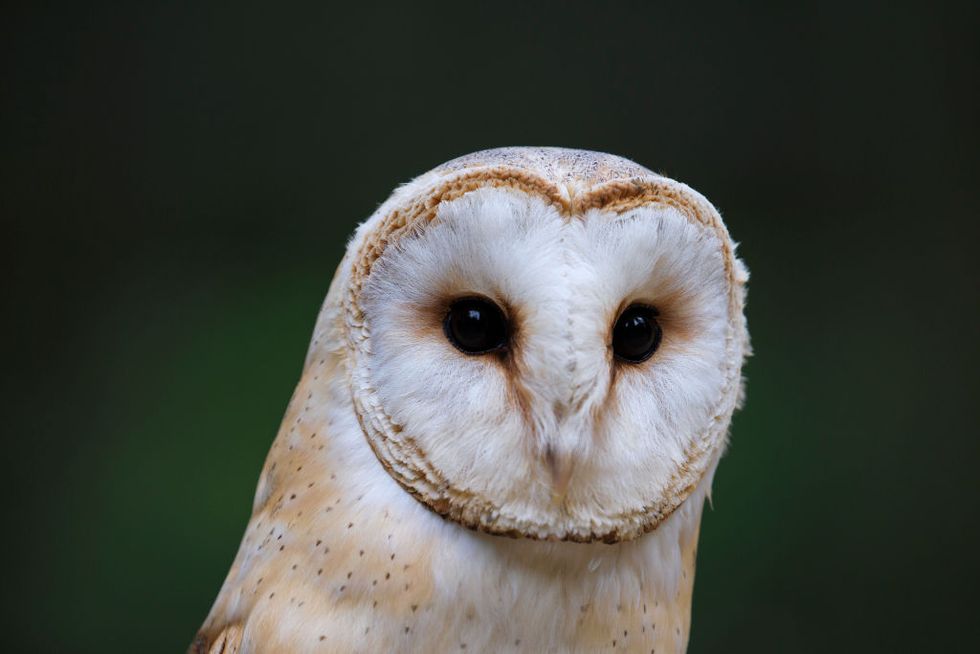
Predators of the barn owl include large American opossums (Didelphis), the common raccoon, and similar carnivorous mammals, as well as eagles, larger hawks and other owls. Among the latter, the great horned owl (Bubo virginianus) in the Americas and the Eurasian eagle-owl (B. bubo)
are noted predators of barn owls. Despite some sources claiming that
there is little evidence of predation by great horned owls, one study
from Washington found that 10.9% of the local great horned owl's diet was made up of barn owls.[47][48][49] In Africa, the principle predators of barn owls are Verreaux's eagle-owls and cape eagle-owls.[50][51] In Europe, although less dangerous than the eagle owl, the chief diurnal predators are the northern goshawk (Accipiter gentilis) and the common buzzard (Buteo buteo).
About a dozen other large diurnal raptors and owls have also been
reported as predators of barn owls, ranging from the similar-sized Cooper's hawk and scarcely larger tawny owl to huge bald and golden eagles.[52] The goshawk and the eagle owl are on the increase because of the greater protection these birds now receive.[27]
Barn owls are hosts to a wide range of parasites. Fleas are present at nesting sites and externally the birds are attacked by feather lice and feather mites which chew the barbules of the feathers and which are transferred from bird to bird by direct contact. Blood-sucking flies such as Ornithomyia avicularia are often present, moving about among the plumage. Internal parasites include the fluke Strigea strigis, the tape worm Paruternia candelabraria, several species of parasitic round worm and spiny-headed worms in the genus Centrorhynchus. These gut parasites are acquired when the birds feed on infected prey which provide intermediate hosts for the parasites.[53] There is some indication that female birds with more and larger spots have a greater resistance to external parasites. This is correlated with smaller bursae of Fabricius, glands associated with antibody production, and a lower fecundity of the blood-sucking fly Carnus hemapterus that attacks nestlings.[54]
Lifespan
The most significant cause of death in temperate areas is likely to be starvation, particularly over the autumn and winter period when first year birds are still perfecting their hunting skills. In northern and upland areas, there is some correlation between mortality in older birds and adverse weather, deep-lying snow and prolonged low temperatures. Collision with road vehicles is another cause of mortality, and may result when birds forage on mown verges. Some of these birds are in poor condition and may have been less able to evade oncoming vehicles than fit individuals would have been. Historically, many deaths were caused by the use of pesticides, and this may still be the case in some parts of the world. Collisions with power-lines kill some birds and shooting accounts for others, especially in Mediterranean regions.[56]
Status and conservation

On Lanzarote a somewhat larger number of these birds still seem to exist, but altogether this particular subspecies is precariously rare: Probably less than three hundred and perhaps fewer than two hundred individuals still remain. Similarly, the birds on the western Canary Islands which are usually assigned to the nominate subspecies have declined much, and here wanton destruction seems still to be significant. On Tenerife they seem relatively numerous but on the other islands, the situation looks about as bleak as on Fuerteventura. Due to their assignment to the nominate subspecies, which is common in mainland Spain, the western Canary Islands population is not classified as threatened.[63][64][65] The Canary barn owl is particularly at risk, and as late as 1975, hunting by fearful locals was limiting the population on Fuerteventura where only a few dozen pairs remain.
In some areas, it may be an insufficiency of suitable nesting sites that is the factor limiting barn owl numbers. Nest boxes are popular among conservationists who motivate farmers and land owners to install them for use as natural rodent control.[66]
Cultural aspects
Common names such as "demon owl", "death owl", "ghost owl" or "lich owl" (from lich, an old term for a corpse) show that traditionally, rural populations in many places considered barn owls to be birds of evil omen. For example, the Tzeltal people in Mexico regard them as "disease givers".[67]
These owls don't "hoot" but emit raspy screeches and hissing noises or
that their white face and underbelly feathers that are visible as they
fly overhead make them look "ghostly". Consequently, they were often
persecuted by farmers who were unaware of the benefits these birds
bring.[68] Negative emotions can also be attributed to the false belief that they could eat large animals such as chickens and cats.[69]
Nest boxes
Nest boxes are used primarily when populations suffer declines [71] although these have many causes. Among them are the availability of natural sites. Early successes among conservationists have led to the widespread application of this method which has become the most used form of population management. The barn owl accepts the provided nest boxes and sometimes prefers them to natural sites, when these are available.[72]
Surveillance

A
nest box can also be regarded as an animal surveillance device.
Surveilling animals can lead to the discovery of new scientific and
industrial fields. For example, biologists and engineers can work on
barn owl surveillance techniques and devices, while social scientists
document the practices that cause humans to observe an animal.[73]
While the diet of the barn owl has been studied, other areas like
breeding success are not well known. Nest boxes provide direct physical
access to the breeding location.
In Switzerland, a research group aims to install RFID
tag readers on the entrance of the nest boxes, thus allowing tracking
of barn owl movements from nest box to nest box. Information about the
behavior of the owls prior to breeding could be obtained using
surveillance.[74]
In the United Kingdom, the "Barn Owl Nest Box Scheme" is promoted by the World Owl Trust[75] and has many participants in local areas such as Somerset, where a webcam has been set up inside a nest box in which seven young were reared in 2014.[76] Another barn owl nest box live-streaming webcam located in California, United States has proved popular online.[77] In May 2012, it was revealed that farmers in Israel and Jordan had, over a period of ten years, replaced pesticides with barn owls in a joint conservation venture called "Project Barn Owl".[78]
Other research tools include using GPS trackers fitted onto the barn owl allowing precise location tracking of the owl.
Alternative Rodent Control Technique
In some projects, use of rodenticides
for biological pest control was replaced by the installation of nest
boxes. It has been shown that the use of nest boxes is less costly than
traditional control with rodenticides.[79]
In Israel, a first use for pest control was in 1983 at the Kibbutz Sde Eliyahu,[80]
where pesticides were becoming a health hazard to local residents. A
local farmer sought after an alternative which he found in installing
nest boxes.
In Malaysia, large areas of rainforest were felled to make way
for oil palm plantations and with few tree cavities for breeding, the
barn owl population, with its ability to control rodent pests,
diminished. The provision of two hundred nest boxes in a trial saw
almost one hundred percent occupancy and as the programme expanded, the
plantations supported one of the densest barn owl populations in the
world.[57]
Similarly, providing nesting boxes has increased the number of barn
owls in rice-growing areas of Malaysia where the rodents do much damage
to the crop. However, although barn owl numbers have increased in both
these instances, it is unclear as to how effective this biological
control of the rats is as compared to the trapping and baiting that
occurred previously.[81]
Tyto alba
many, see text
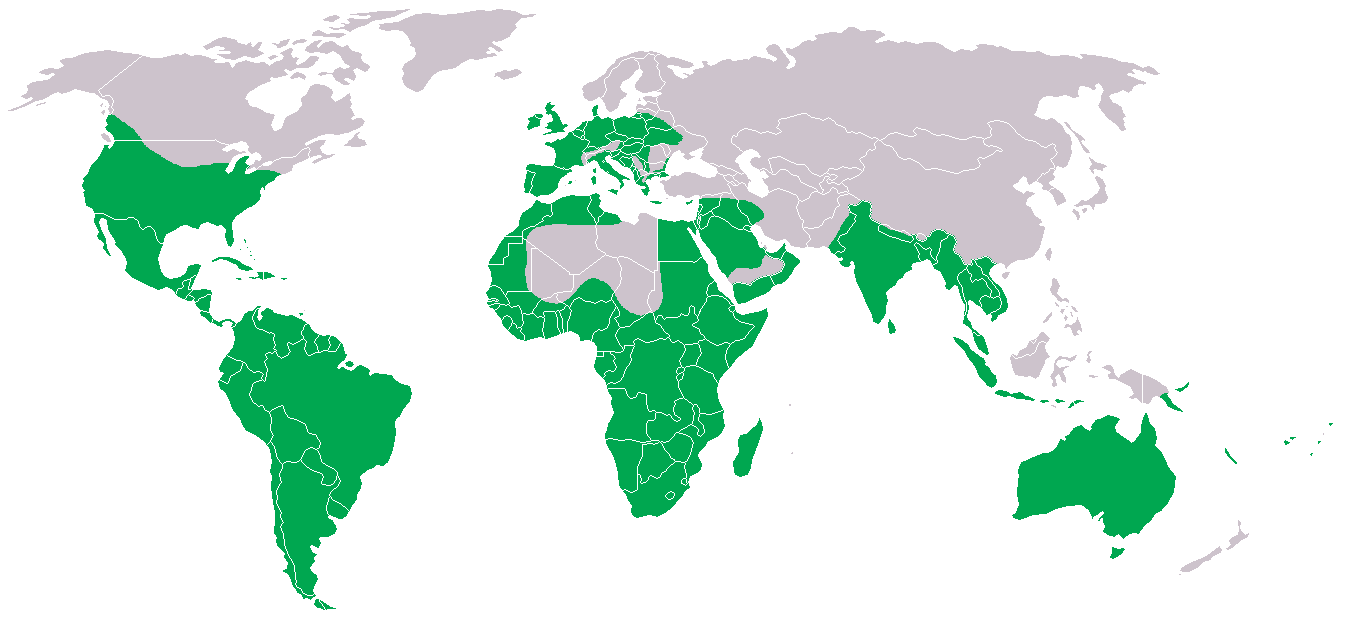
Global range in green
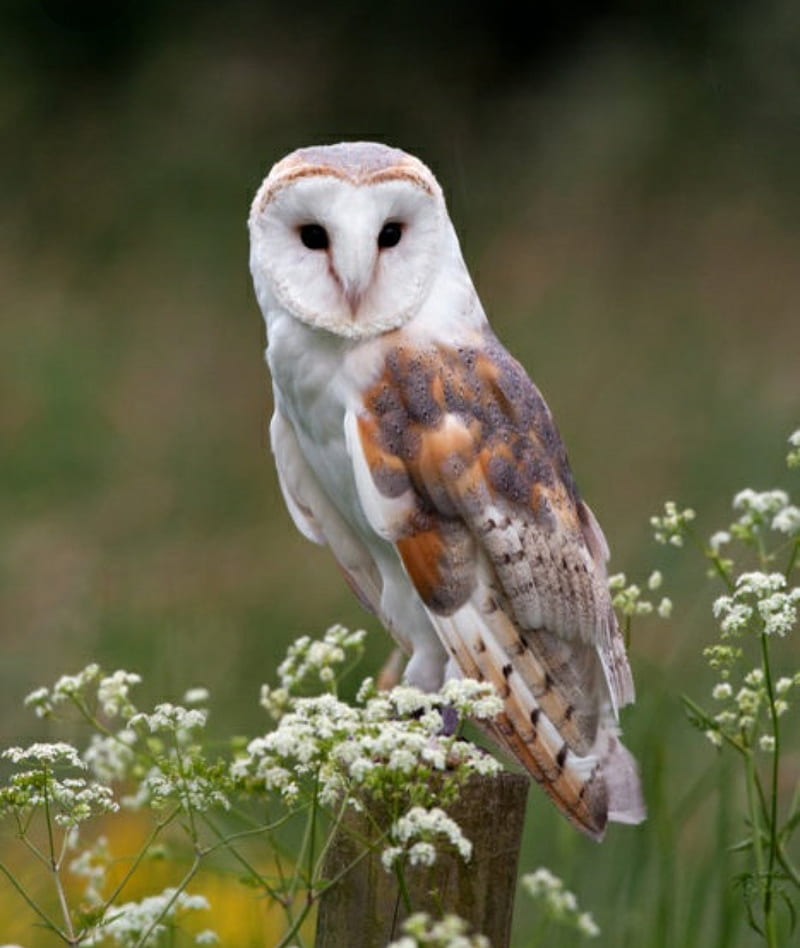



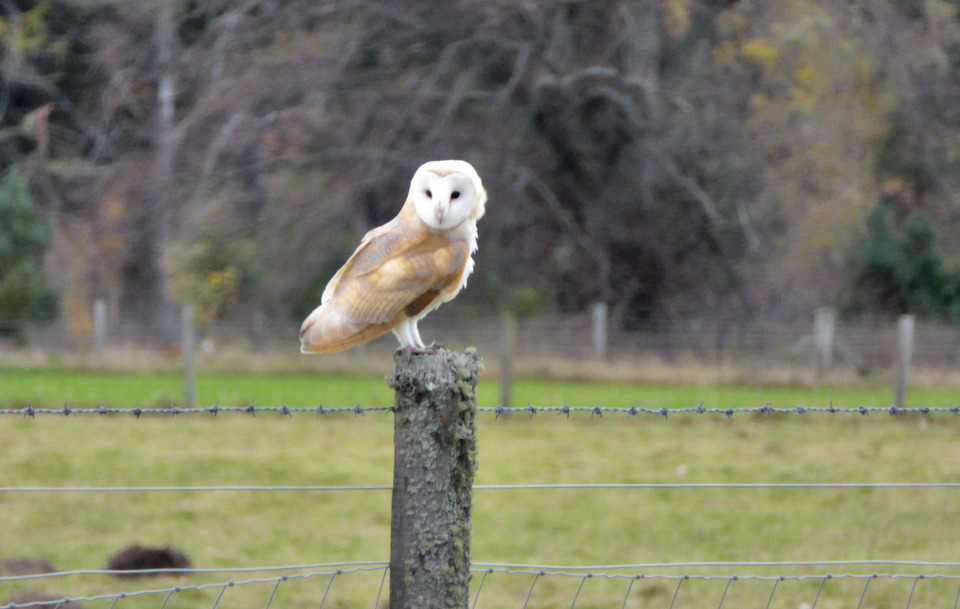


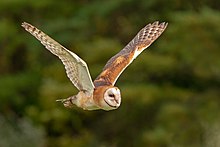
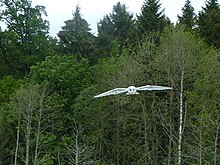
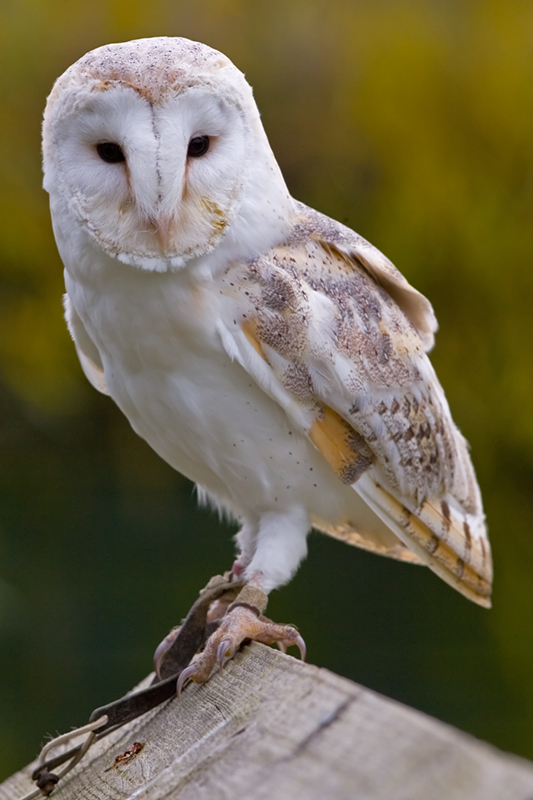
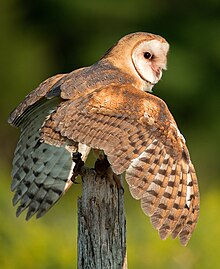

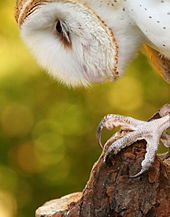








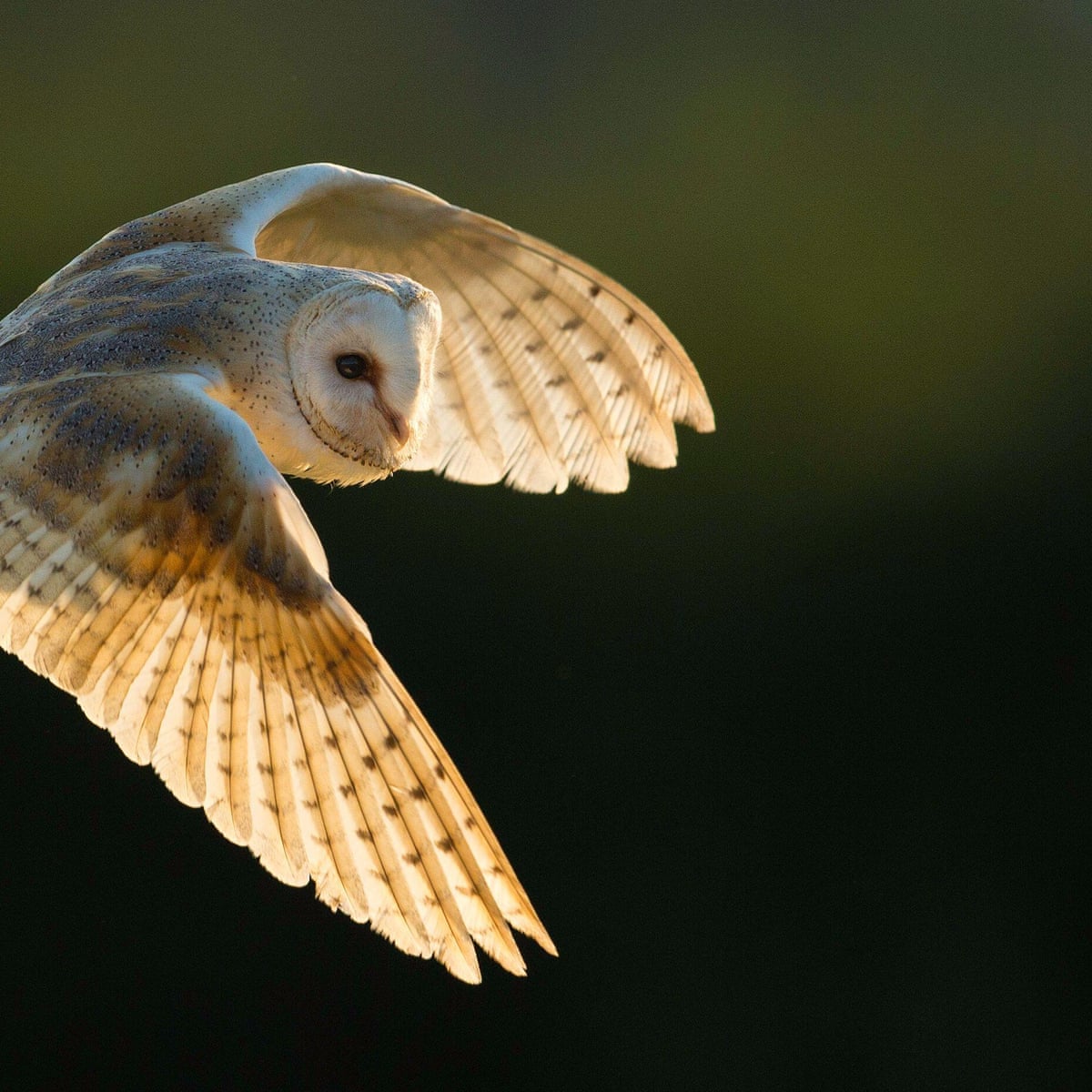
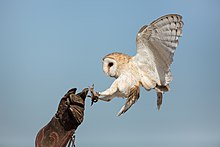



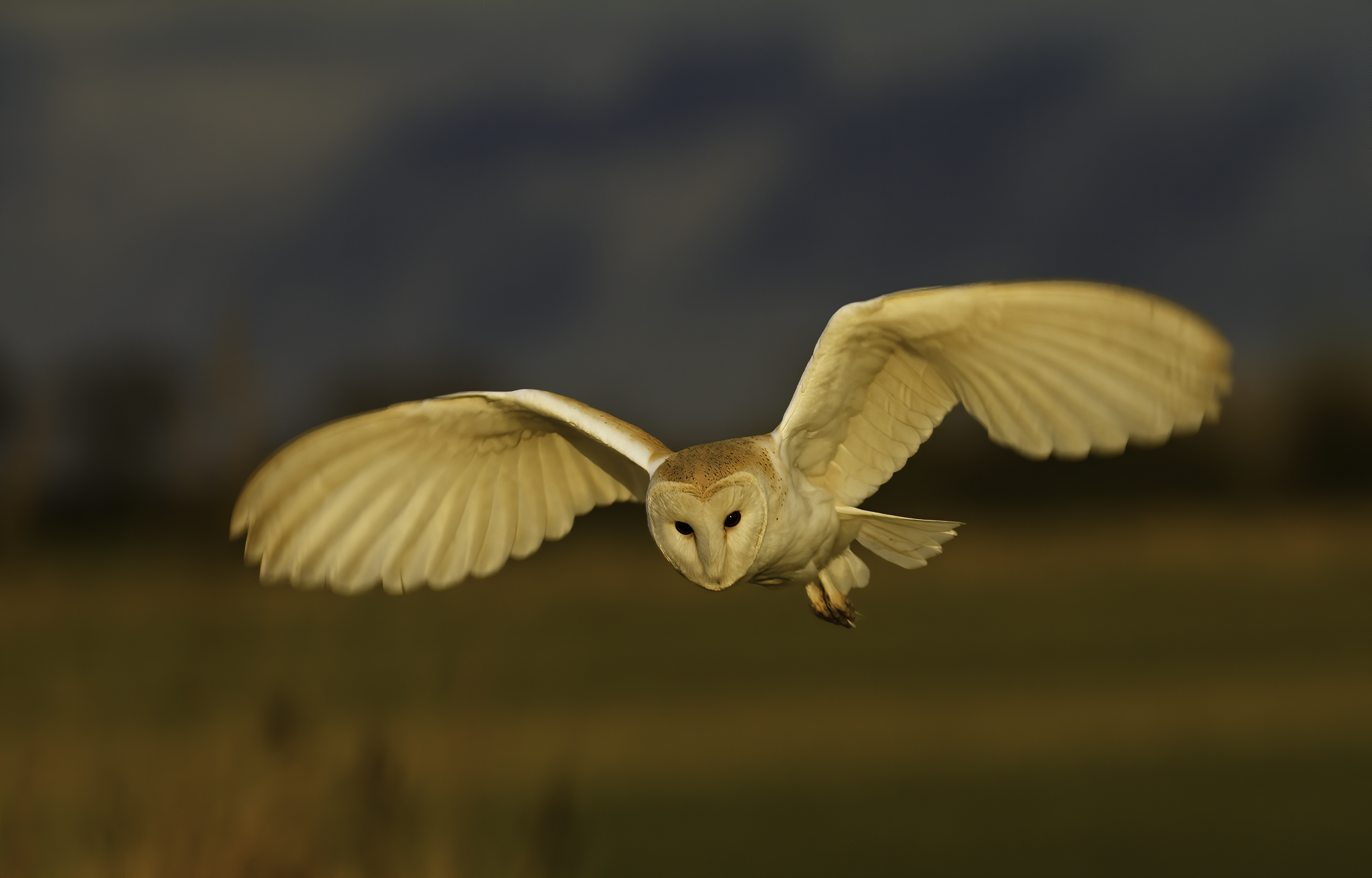


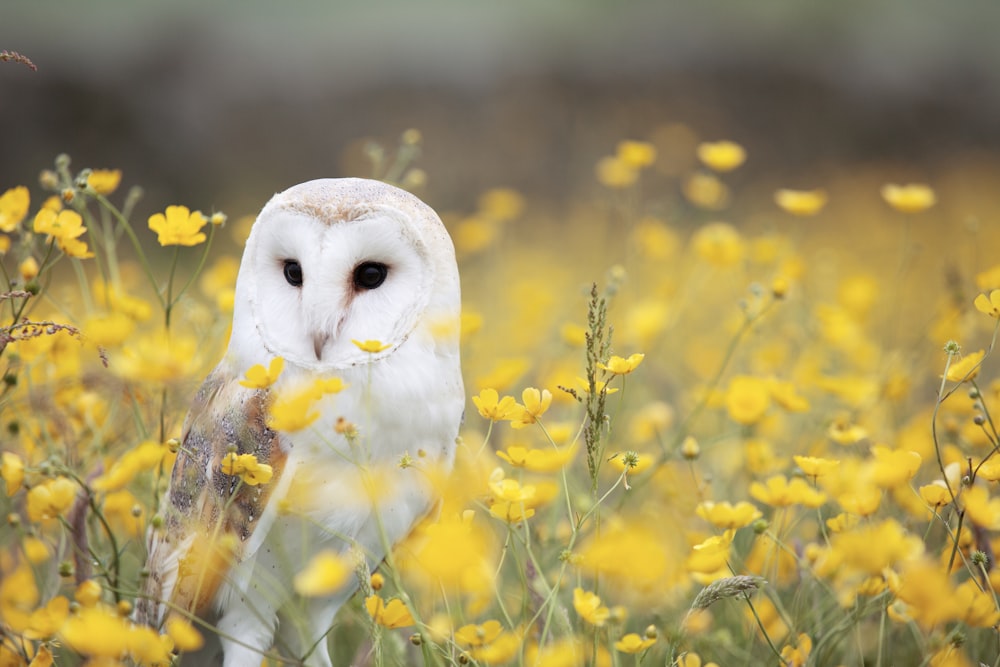
No comments:
Post a Comment
Note: Only a member of this blog may post a comment.